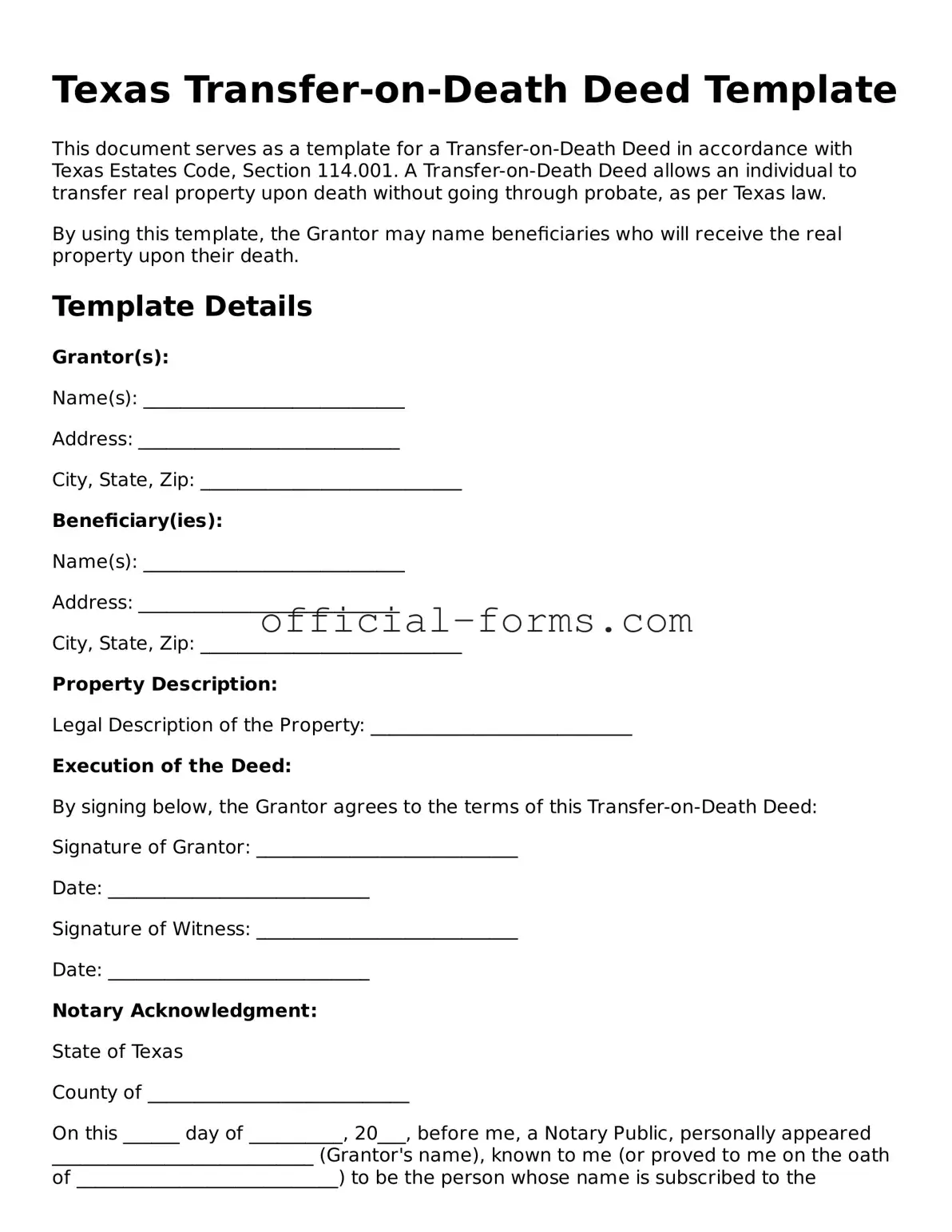Filling out the Texas Transfer-on-Death Deed form can be a straightforward process, but many individuals make common mistakes that can lead to complications in the future. One significant error is failing to provide accurate property descriptions. The property must be clearly identified to avoid disputes or confusion later. Without precise details, such as the legal description, the deed may be deemed invalid.
Another frequent mistake is neglecting to include the names of all beneficiaries. If multiple individuals are intended to inherit the property, their names must be listed correctly. Omitting a beneficiary can result in unintended consequences, including disputes among heirs.
Many individuals also forget to sign the deed in front of a notary public. A signature without notarization can render the deed ineffective. It is crucial to ensure that the deed is properly executed according to Texas law.
In addition, people often overlook the importance of recording the deed with the county clerk’s office. Even if the deed is completed correctly, failure to record it can lead to issues regarding the property’s transfer upon death. Recording the deed provides public notice and protects the rights of the beneficiaries.
Another common mistake involves not updating the deed after changes in circumstances. Life events, such as marriage, divorce, or the death of a beneficiary, necessitate updates to the deed. Failing to make these changes can complicate the transfer process.
Some individuals may also assume that a Transfer-on-Death Deed can be used for all types of property. However, certain properties, like those held in a trust or those subject to a mortgage, may not be eligible for transfer through this deed. Understanding property eligibility is essential.
Additionally, people sometimes misinterpret the implications of the deed on taxes. A Transfer-on-Death Deed does not affect property taxes during the grantor's lifetime. However, beneficiaries may face tax implications upon transfer. It is advisable to consult with a tax professional regarding these matters.
Another mistake is not communicating intentions with beneficiaries. It is vital to discuss the existence of the deed with those named as beneficiaries. This transparency can prevent misunderstandings and ensure that everyone is aware of their rights.
Finally, individuals may fail to seek legal advice when needed. While the form can be completed independently, consulting with a legal expert can help avoid pitfalls. Legal professionals can provide guidance tailored to individual circumstances, ensuring that the deed fulfills its intended purpose.
